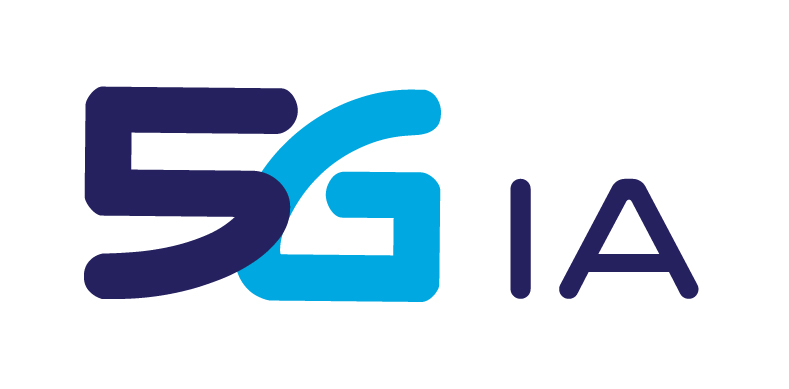

- About us
- Getting Involved
- Plans & Papers
- Events
- European 5G Activities
- Media & News
- Contact
Testing 5G-enabled CAM functionalities in cross-border scenarios: 5G-MOBIX announces the first-ever public demonstration across the Greece -Turkey border
Testing 5G-enabled CAM functionalities in cross-border scenarios: 5G-MOBIX announces the first-ever public demonstration across the Greece -Turkey border
Is it possible for a truck to cross the busy Greek -Turkish border seamlessly, without (any action from the) driver or requirement to stop? Today the Greek and Turkish partners of the 5G-MOBIX project will demonstrate exactly that and convince the public that connected and automated mobility (CAM) is not some futuristic scenario but is occurring now, even under challenging circumstances such as crossing hard land borders.
Connected automated mobility use cases come with challenging connectivity requirements, 5G cellular technology is deployed at the right time to fulfil these requirements – at least in metropolitan centres. In rural areas or along motorways across borders, the deployment is slower due to lower population densities and thus, lower commercial investment incentives for mobile network operators (MNOs).
The 5G-MOBIX project consortium, which brings together 58 partners from 13 countries, including from the EU, Turkey, China, and South Korea, has developed and evaluated automated vehicle functionalities using 5G core technological innovations along two cross-border corridors and several urban trial sites.
The Greece- Turkey cross-border corridor is one of them. Located on the south eastern border of Europe, between Kipoi, Greece and Ipsala, Turkey, this trial site provides a strategic geopolitical environment, a pertinent testing ground for the operation of CAM use cases at a hard EU border.
During the demonstration, the Greece-Turkey trial site partners will present different user stories and showcase the impact of tested solutions that target the specific characteristics of this dynamic border route.
More specifically, the demonstrations will show how the heavy commercial traffic in this border region – created by large numbers of queuing trucks – may be alleviated by implementing platooning, automated truck routing and assisted border crossing.
These field trials bring insights into the benefits of 5G in the CAM context. Various protocols, scenarios and 5G features have been tested under conditions of regular vehicular traffic, network coverage, service demand, as well as considering the inherently distinct legal, business, and social aspects at each site.
Their performance is being evaluated in the context of cross-border challenges concerning telecommunication infrastructure, application security, privacy and regulatory issues. “CAM traffic, especially commercial long haul traffic, is fundamental to a functioning economy and society, and is not bound to single countries,” says Coen Bresser, Senior Manager Innovation & Deployment at ERTICO ITS Europe and 5G-MOBIX project coordinator. “Realizing seamless border crossings really is key to the success of CAM. Only by solving the current coverage gap can we realize the full benefits of CAM and with the emerging deployment of 5G, we have a key opportunity to fix it.”
###
About 5G-MOBIX (5G for cooperative & connected automated mobility on X-border corridors)
The 5G-MOBIX EU-funded Innovation Action (2018-2022) is testing automated vehicle functionalities over 5G networks along two Cross-Border Corridors in Greece-Turkey and Spain-Portugal and also six local, mainly
urban, Trial Sites in France, Germany, Netherlands, Finland, China and South Korea. The local Trial Sites are bringing complementary insights to the cross-border issues trialled at the Corridors. The trials address five defined categories of Connected and Automated Mobility (CCAM) use cases: Advanced Driving, Platooning, Extended Sensors, Remote Driving and Vehicle Quality of Service Support. The trials allow the evaluation of the benefits and challenges of provisioning 5G-enabled CCAM services in cross-border conditions, as well as to conduct impact assessments and cost/benefit analyses for 5G corridors deployment.
The Greece -Turkey cross-border corridor consists of eight partners from the 5G-MOBIX Consortium. The 5G networks are provided by ERICSSON Greece and ERICSSON Turkey, while COSMOTE and Turkcell are providing existing infrastructure and networks to cover this cross-border corridor. The Turkish vehicle manufacturer Ford Otosan is providing the two F-MAX trucks to carry out the defined user stories. The research team at the Institute of Communication and Computer Systems of NTUA (I-SENSE GROUP/ICCS) contributes to the trials with the “See-what-I-see” CAM application which enables the exchange of live video stream between the vehicles of a truck platoon, while also coordinating the evaluation efforts across the project. On Board Units (OBU) developers WINGS and IMEC also provide their expertise and solutions to support the trials.
www.5g-mobix.comFor more information, please contact:
Rita Bhandari, r.bhandari@mail.ertico.com
About ERTICO
ERTICO – ITS Europe is a public-private partnership of 120 companies and organisations representing
Service Providers, Suppliers, Traffic and Transport Industry, Research, Public Authorities, Users, Mobile
Networks Operators, and Vehicle Manufactures.
ERTICO embodies Thought Leadership and fosters Stakeholder Engagement; ERTICO innovates, promotes and deploys Intelligent Transport Systems and Services (ITS) through a variety of activities including European co-funded projects, Innovation Platforms, International Cooperation, Advocacy and Events.
ERTICO is also the organiser of the ITS European and World Congresses, which take place every year in a different European city.
Our focus is on Connected & Automated Driving, Urban Mobility, Clean Mobility, and Transport & Logistics.
www.ertico.com







Share On